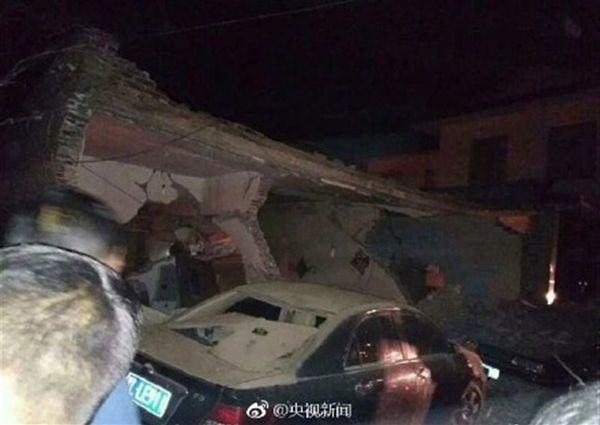Rinchen, 40, works at a crematorium in a Tibetan community in northwest China.
For Tibetans, sky and water burials have traditionally been the most common funerary customs. Cremation has only been used in the modern age.
The Chabcha town funeral management house, where Rinchen and his wife work, was founded in 1982. It was one of the first crematoriums in Qinghai province, home to over 1.37 million ethnic Tibetan people.
“It took a very long process of consulting high monks before establishing the crematorium. The site for the cremation house was chosen by the tenth Panchen Lama,” said Duraga, deputy director of the civil affairs bureau of Gonghe County, which administers Chabcha Town. Chabcha is the seat of the government of Hainan Tibetan Autonomous Prefecture in Qinghai.
“In less developed Tibetan communities, such as herding areas, people still favor sky burials. But in the city, more Tibetan people now choose cremation,” said Duraga.
There are four cremation houses at the crematorium.
“In the 1980s, only a few dozen people were cremated here each year,” said Rinchen, whose father-in-law was the first person to run the crematorium.
Last year, 352 people were cremated there, and most of them were Tibetans from Qinghai, Gansu and northwest Sichuan.
Families usually put the ashes in bags made of white cloth and scatter them at sacred mountains and lakes.
“People scatter the ashes at sky burial sites at Qinghai Lake and the Yellow River, which flows through the county,” said Rinchen.
“Before each cremation, families of the deceased invite monks from nearby monasteries, such as Khyamru Monastery, to give sermons and preside over the ceremonies,” he said.
Rinchen and his wife Tsering make sure the lamps are always lit. Their family now lives at the crematorium.
“When I started living here, I often felt scared. Now I light lamps every day, touching the prayer wheels. It is a job to keep me busy,” said Tsering.
“I use my hands to help the deceased finish their last step in the world. I feel it is the natural thing to do,” she said.
About a few hundred miles to the southwest, Chindo County, in Yushu Tibetan Autonomous Prefecture, is an area where sky burials are more common. Most of the people in the county are herders.
Tashi, who performs sky burials, often has to get up early to prepare for the rituals.
In sky burials, bodies are fed to vultures and other predatory birds. Buddhists believe in a cycle of rebirth and advocate kindness and charity. The spirit of the dead is believed to leave the body the moment a person dies and the dead should be fed to hungry vultures as a last token of charity.
Tashi is a monk at Lab Monastery. He started performing sky burial rituals in 2011. The Serkhang sky burial site, located about 3,800 meters above sea level at the foot of a snow-capped mountain, receives over 30 bodies every year.
“A burial starts at four in the morning and lasts about seven hours. I make sure every detail is right for the ritual,” he said.
However, sometimes sky burial rituals do not go so smoothly. Environmental drives to kill rats on grasslands have led to a decline in the number of vultures and eagles.
“Some people may still honor tradition, but others may want the modern methods of burial. The people will choose on their own,” said Wang Fayu, director of social affairs office of the Qinghai Provincial Civil Affairs Department.
A crematorium has been set up in every Tibetan autonomous county in Qinghai to provide diverse choices for the people, said Wang.
“The living buddhas said in the end, humans return their bodies to nature. No matter which method chosen, it is to show respect to the deceased and give solace to the living,” said Rinchen.

